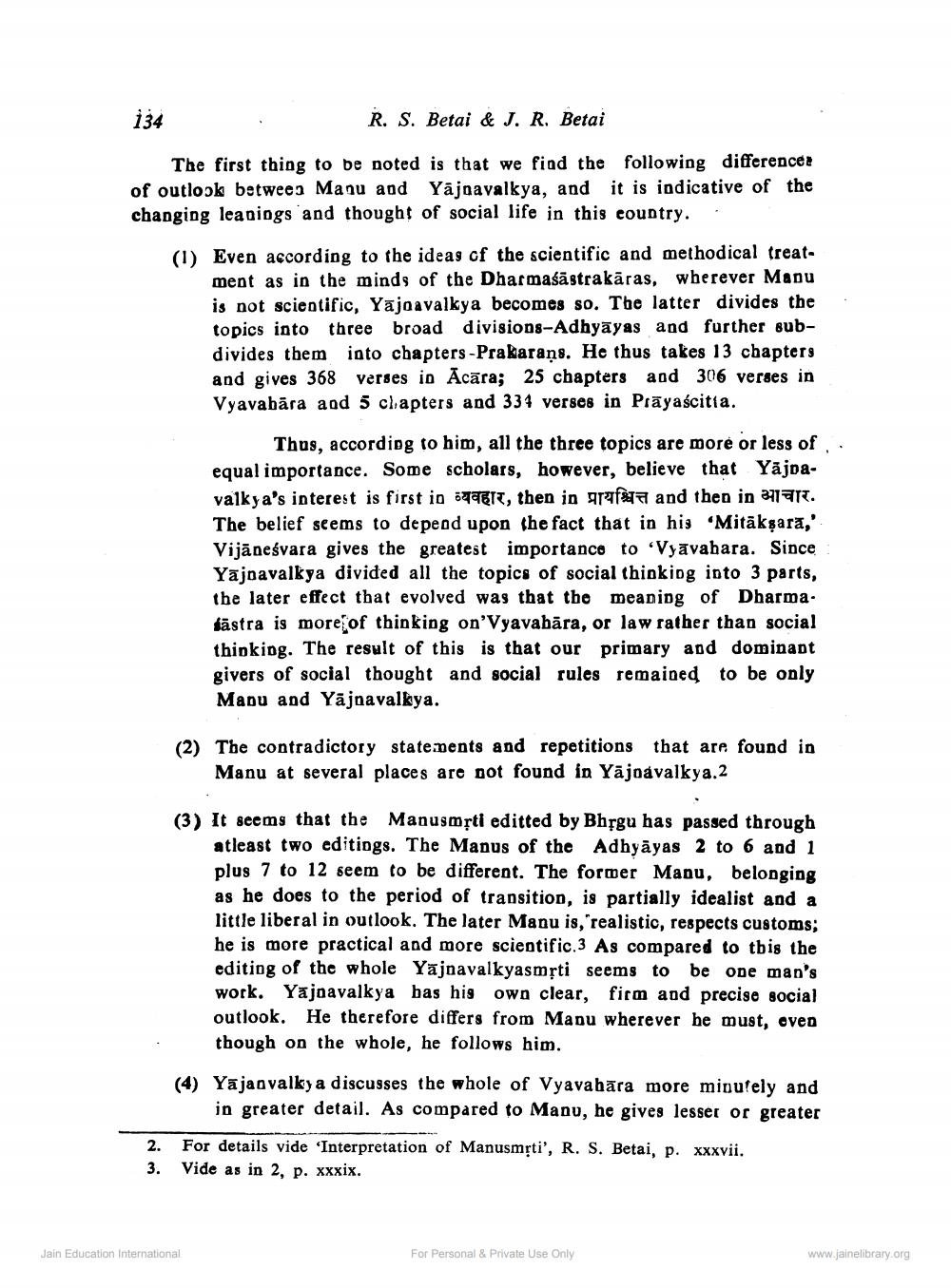________________
134
R. S. Betai & J. R. Betai
The first thing to be noted is that we find the following differencer of outlook betweeManu and Yājoavalkya, and it is indicative of the changing leanings and thought of social life in this country. .
(1) Even according to the ideas of the scientific and methodical treat
ment as in the minds of the Dharmaśāstrakāras, wherever Manu is not scientific, Yajoavalkya becomes so. The latter divides the topics into three broad divisions-Adhyāyas and further subdivides them into chapters -Prakarang. He thus takes 13 chapters and gives 368 verses in Ācāra; 25 chapters and 306 verses in Vyavabāra aod 5 chapters and 334 verses in Prayascitia.
Thus, accordiog to him, all the three topics are more or less of - equal importance. Some scholars, however, believe that Yājpavalkya's interest is first in व्यवहार, then in प्रायश्चित्त and then in आचार. The belief seems to depend upon the fact that in his "Mitākşara,' Vijānesvara gives the greatest importance to "Vyāvabara. Since Yajoavalkya divided all the topics of social thinking into 3 parts, the later effect that evolved was that the meaning of Dharmatāstra is more of thinking on’Vyavabāra, or law rather than social thinking. The result of this is that our primary and dominant givers of social thought and social rules remained to be only Maou and Yajnavalkya.
(2) The contradictory statements and repetitions that are found in
Manu at several places are not found in Yājoavalkya.2
(3) It seems that the Manusmộti editted by Bhřgu has passed through
atleast two editings. The Manus of the Adhyāyas 2 to 6 and 1 plus 7 to 12 seem to be different. The former Manu, belonging as he does to the period of transition, is partially idealist and a little liberal in outlook. The later Manu is, 'realistic, respects customs; he is more practical and more scientific 3 As compared to tbis the editing of the whole Yājnavalkyasmộti seems to be one man's work. Yajoavalkya has his own clear, firm and precise social outlook. He therefore differs from Mapu wherever he must, even though on the whole, he follows him.
(4) Ya ja valky a discusses the whole of Vyavabara more minutely and
in greater detail. As compared to Manu, he gives lesser or greater
2. 3.
For details vide 'Interpretation of Manusmrti', R. S. Betai, p. xxxvii. Vide as in 2, p. xxxix.
Jain Education International
For Personal & Private Use Only
www.jainelibrary.org




